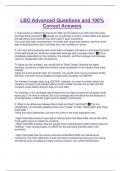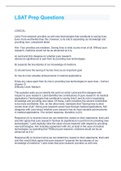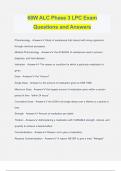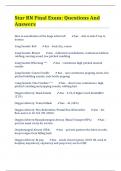Tentamen (uitwerkingen)
LBO Advanced Questions and 100% Correct Answers
- Vak
- Instelling
1. How could you determine how much debt can be raised in an LBO and how many tranches there would be? Usually you would look at recent, similar LBOs and assess the debt terms and tranches that were used in each transaction. You could also look at companies in a similar size range and industry, see...
[Meer zien]












